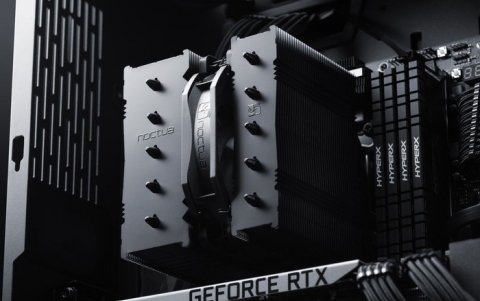
Samsung To Heavily Invest in LCDs, AMOLEDs, Semiconductors
Samsung today announced it will increase its total investment in manufacturing facilities and research & development for 2010 to 26 trillion won, its largest annual investment outlay ever.
Approximately 18 trillion won will be invested in facilities including 11 trillion won for semiconductor manufacturing facilities and 5 trillion won to expand capacity for LCD panel production, while about 8 trillion will be invested in research & development, the company said.
Samsung also held a ground breaking ceremony for a new memory semiconductor fabrication plant, Line-16, at its Nano City Complex in Hwaseong, Gyeonggi Province today.
Samsung decided to significantly increase facilities investment for 2010 to address indications of improving market conditions throughout the global consumer electronics and IT industries, while further strengthening Samsung?s position in memory semiconductors and LCD panels.
With the investment in new manufacturing lines, Samsung expects to hire 10,000 new employees in 2010, including 3,000 for the Semiconductor Business and 4,000 for the LCD Business.
With today?s announcement, Samsung?s Memory Division will increase its facilities investment for 2010 from its original plan of 5.5 trillion won to 9 trillion won. The additional investment includes establishing the new Line-16 for DRAM, NAND and next-generation memory products in Hwaseong, and increasing the capacity of the existing Line-15 for the production of 30 nanometer (nm) class DDR3 Dynamic Random Access Memory (DRAM).
To be constructed on approximately 560,000 square meters of vacant land within Samsung?s 1.6 million square meter Hwaseong complex, Line-16 is expected to produce 200,000 12-inch wafers monthly from 2011. It will be Samsung?s first new semiconductor line since the company opened its Line-15 in 2005. The phased investment in the new Line-16 is expected to total approximately 12 trillion won to completion.
Expansion of Line-15 will allow Samsung to increase the percentage of 30-nm-class DDR3 DRAM to more than 10 percent of its total production volume for electronic data processing (EDP) DRAM by the end of the year. This is in response to increasing demand for more energy-efficient, high-density memory using the most efficient process technology available.
Further, Samsung will also invest approximately 2 trillion won to fortify its System LSI operations in meeting growing demand for System-on-Chip (SoC) solutions for mobile handsets and digital TVs, and to strengthen its foundry business.
Anticipating increasing demand for large-size LCD TV panels from next year and beyond, Samsung also will establish a new 8th generation LCD line at its Tangjeong Complex in South Chungcheong Province. Entailing an investment of 2.5 trillion won, the new Line 8-2 Phase 2 facility will have a capacity of 70,000 panels per month.
Together with earlier announced LCD investments, construction of Samsung?s fourth 8th generation LCD line will increase investment in LCD facilities for 2010 to a total of 5 trillion won.
Separately, joint venture Samsung Mobile Display Co., Ltd. announced it will invest an additional 2.5 trillion won to develop the world?s largest Active Matrix Organic Light Emitting Diode (AMOLED) display manufacturing facility in the Tangjeong Complex.
Samsung Mobile Display will establish the new 5.5 generation (1300x1500 mm) AMOLED line by 2012 with a capacity of 70,000 panels per month. Once complete, the line will be able to produce panels for applications in AMOLED TVs, allowing for further growth opportunities in the cutting-edge display technology.
Samsung also held a ground breaking ceremony for a new memory semiconductor fabrication plant, Line-16, at its Nano City Complex in Hwaseong, Gyeonggi Province today.
Samsung decided to significantly increase facilities investment for 2010 to address indications of improving market conditions throughout the global consumer electronics and IT industries, while further strengthening Samsung?s position in memory semiconductors and LCD panels.
With the investment in new manufacturing lines, Samsung expects to hire 10,000 new employees in 2010, including 3,000 for the Semiconductor Business and 4,000 for the LCD Business.
With today?s announcement, Samsung?s Memory Division will increase its facilities investment for 2010 from its original plan of 5.5 trillion won to 9 trillion won. The additional investment includes establishing the new Line-16 for DRAM, NAND and next-generation memory products in Hwaseong, and increasing the capacity of the existing Line-15 for the production of 30 nanometer (nm) class DDR3 Dynamic Random Access Memory (DRAM).
To be constructed on approximately 560,000 square meters of vacant land within Samsung?s 1.6 million square meter Hwaseong complex, Line-16 is expected to produce 200,000 12-inch wafers monthly from 2011. It will be Samsung?s first new semiconductor line since the company opened its Line-15 in 2005. The phased investment in the new Line-16 is expected to total approximately 12 trillion won to completion.
Expansion of Line-15 will allow Samsung to increase the percentage of 30-nm-class DDR3 DRAM to more than 10 percent of its total production volume for electronic data processing (EDP) DRAM by the end of the year. This is in response to increasing demand for more energy-efficient, high-density memory using the most efficient process technology available.
Further, Samsung will also invest approximately 2 trillion won to fortify its System LSI operations in meeting growing demand for System-on-Chip (SoC) solutions for mobile handsets and digital TVs, and to strengthen its foundry business.
Anticipating increasing demand for large-size LCD TV panels from next year and beyond, Samsung also will establish a new 8th generation LCD line at its Tangjeong Complex in South Chungcheong Province. Entailing an investment of 2.5 trillion won, the new Line 8-2 Phase 2 facility will have a capacity of 70,000 panels per month.
Together with earlier announced LCD investments, construction of Samsung?s fourth 8th generation LCD line will increase investment in LCD facilities for 2010 to a total of 5 trillion won.
Separately, joint venture Samsung Mobile Display Co., Ltd. announced it will invest an additional 2.5 trillion won to develop the world?s largest Active Matrix Organic Light Emitting Diode (AMOLED) display manufacturing facility in the Tangjeong Complex.
Samsung Mobile Display will establish the new 5.5 generation (1300x1500 mm) AMOLED line by 2012 with a capacity of 70,000 panels per month. Once complete, the line will be able to produce panels for applications in AMOLED TVs, allowing for further growth opportunities in the cutting-edge display technology.




















